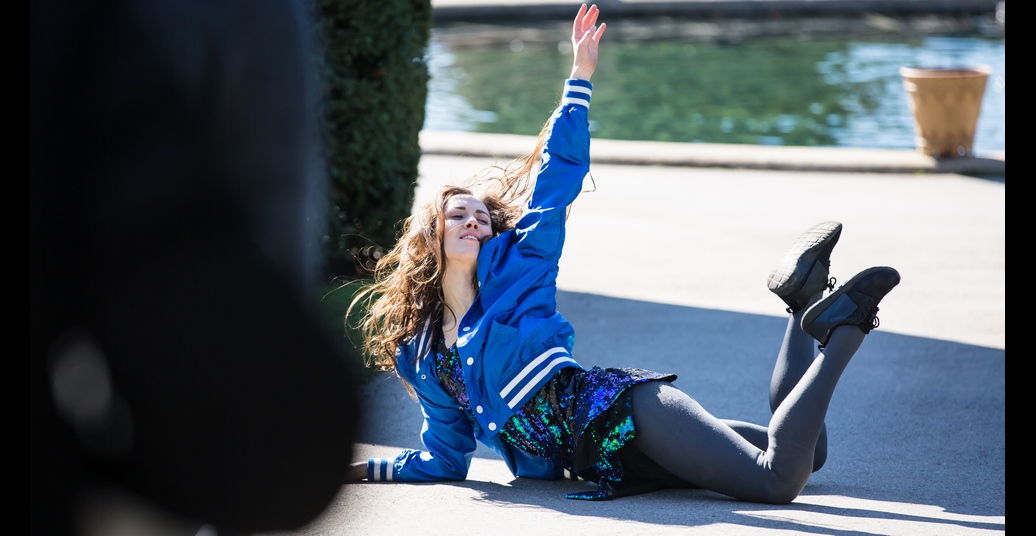“The Dying Swans Project”, conceptualised by Eric Gauthier and produced by Gauthier Dance / Dance Company Theaterhaus Stuttgart, is a screendance project involving international choreographers made during the second pandemic winter. In her video “all tomorrow’s parties”, Berlin-based choreographer Constanza Macras provides a fascinating perspective on a post-party mood as an awakening from the post-Covid-19 period. From another view, Meg Stuart and Damaged Goods interface through a poetic and touching screendance work for Haus der Kulturen der Welt.
When listening to Gauthier talking about the origin of “The Dying Swans Project”, it is clear that the chosen themes are derived from a physical and emotional state specifically brought about by the Covid-19 situation, rather than from some detached artistic research. After the cancellation of the company’s winter tour, Gauthier felt he was physically falling — like a dying swan — when he noticed the hopelessness of his dancers. Thus, in “record time”, this project, made entirely for the screen (and through screens, thanks to Zoom), was born. The dancers are from Gauthier Dance, and a different choreographer created an approximately three-minute solo for each of them, evoking Fokine’s world-renowned 1907 masterpiece for Anna Pavlova.
16 choreographers, 16 dancers, 16 musicians, and 16 filmmakers add up to a total of 64 artists involved in the project. Interestingly, the date chosen for the streaming premiere was 16 April, which may also be read as 16.04. This sounds like a mathematical appointment with the stars in order to introduce this work to the public as a message of hope. Gauthier explains that his desire is to convey a sense of hope with the image of the swan — also through the figure of the “starving swan” which strives to survive — rather than concentrating on death, a theme so heavily experienced in these times. By re-using the image of the swan, so beloved of the dance-world from the end of the 19th century, Gauthier expresses the relevance of engaging in a process of choreographic archaeology in order to deal with present circumstances.
With a clear reference to the Velvet Underground and Nico’s hit song in Macras’s “all tomorrow’s parties”, dancer Sidney Elizabeth Turtschi wakes from restless sleep in the open-air lobby of the Wilhelma Zoological and Botanical Garden (Stuttgart). Dressed in a post-party look, she walks along a path between rows of very curated trees. References taken from classical ballet and repertoire gestures, voguing, fragmented movements, circles of the torso, and rolls on the floor are all included within Macras’s recognisable melting-pot movement language. The result is that the dancer embodies that feeling of pleasant exhaustion reached after hours of partying. It is in the transposition of the swan-wings arms movement into voguing sequences — and in the dip fall — where I see the girl-swan in a process of regeneration most strongly. Interestingly, Macras uses the open-air space both site-specifically and theatrically, with the lateral rows of trees as wings, supported by the frontal perspective with the architecture of the lobby as a possible proscenium. The soundtrack by Robert Lippok, Macras’s long-term collaborator and member of the now defunct To Rococo Rot, recalls the atmosphere of an after-party. At the end, the music stops, and I can hear the sound of the fountain. The dancer lights herself a cigarette, evoking images of the moments after sex.
During the pandemic, the screendance genre has become a powerful and ubiquitous tool both to view and create dance. Dance artists have developed intriguing perspectives, not only in order to stay in contact with their audiences, but also to make (virtually) live spaces accessible that would otherwise have been out of bounds. Meg Stuart’s use of the roof of the Haus der Kulturen der Welt (HKW) is one such case. With the project “CC: World”, HKW commissioned 31 artists to respond to the current pandemic in the form of personal letters — videos and essays — to the world and with all of humanity in cc. The work premiered in autumn 2020. Stuart created four pieces — “The Lobby”, “Intermission”, “Overtime”, and “The Clock” — inspired by a state of “aloneness”. Each is accompanied by poetry, with music composed by Hahn Rowe. With the exception of the first piece, which is situated inside the main hall of HKW, the works take place on the immense white waving roof of the building. In the first video, five dancers wearing wrestling masks move around the hall, taking up their places on the sofas and looking almost disoriented. In the second piece, the dancers move across the roof, dressed in black plastic and with pink gloves on, as touching is still not allowed. In the third, the wrestler-dancers try (and fail) to fix a flaglike sculpture onto the roof. In the final piece, the dancers move slowly across the surface of the roof as though they are falling into the sky, creating a rarefied landscape. For the first time, we see the city around them clearly and the frames are inverted, recalling the movement of a clock. Being (virtually) outside and so close to the sky imparts both a sense of reaching for the unknown and that feeling of vertigo and loss when arriving at top of a mountain. Despite having already been available for some time, these works feel perfectly suited to these three brief days of unexpected summer: the timing is ideal for their message of strengthened hope for the present-future of dance.
“The Dying Swans Project” is available free of charge on the web channel 3sat-Mediathek until 16 April 2023, and on the social media channels of Theaterhaus Stuttgart and Gauthier Dance.
“CC:World / Meg Stuart” is available on the HKW website and Vimeo channel.




